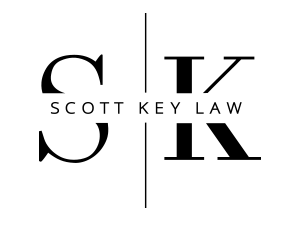My First Georgia Appeals Brief Since Buying Typography for Lawyers
I just finished my second draft of a Brief of Appellant for a case I will soon be filing in the Supreme Court of Georgia. It is the first brief I have filed since I purchased and read Matthew Butterick’s fantastic book, Typography for Lawyers. I’ve written about this book already, and I don’t want to do a full review of it. The real review will come over time as I integrate the valuable tips in this book. However, I am changing the way I prepare briefs and pleadings as I work with this book. So, I think it might be helpful to check in from time to time as I learn more. I want to explain a couple of things about some key lessons I have learned so far.
- Don’t try to do it all at once. I’m taking a buffet approach to the advice offered in this book. It is a little overwhelming to try to do a wholesale change. There are many rules to learn and track. I’m trying to bring something new into every brief I do. The fantastic thing is that, from the appearance of my opponent’s brief, it appears that he isn’t reading this book. And, comparing the layout of my brief to the layout of his, I have another edge on the competition (note, I am working on about three briefs right now. If you are the competition on one of them, I’m not necessarily talking about you. In fact, keep doing the same stuff. Your brief looks great).
- White space is important. If I’ve learned one key thing so far, it is to look at your pages. How does your brief look? Is it a brief you would want to read? Mr. Butterick advises that you should have more than one-inch margins. Unfortunately, the Georgia Supreme Court is pretty serious about their double space rule. I got a little frightened about playing around with the spacing. Ideally, I would go to two inch margins. But they looked funny with double spacing. So, I went to inch and a half, and it made a tremendous difference in the look. This brings me to my next point.
- You can still do some amazing things to your layout within the constraints of court rules. Alas, I stuck with Times New Roman 14, mainly because I am working with another lawyer on this case, and I didn’t want to shell out money to buy a new font set (Mr. Butterick says much about purchasing non-system fonts in his book) for this brief only to encounter issues as I collaborate with co-counsel. But, the margin adjustments really made a night and day sort of difference. I’m off to a good start
- I’m using italics where I was underlining. It makes the brief look better. My opponent went crazy with the whole underlining thing. It’s like his brief is a “before” picture of my current brief.
- I’m using a real ellipsis ( … ) instead of typing out three periods ( … ). It looks better, and life is much easier when it ends up on the end of the line. Those three dudes stick together now.
- I’m using a real en dash now ( – ) where I was just typing two hyphens ( — ) before. Oh, and I now know what an en dash is. I also know what an em dash is ( — ).
- I stopped putting bad parenthesis art in the case caption and started doing my caption using tables.
These are a few simple changes that I have made in the layout of the brief. It has made a world of difference. In addition, I am about a week ahead of deadline on this brief. So, I have the luxury of tending to the substance in addition to picking up more hands-on knowledge of layout. Which is my final lesson. Thinking about layout makes the whole process more fun than it already was

Leave a Reply
Want to join the discussion?Feel free to contribute!